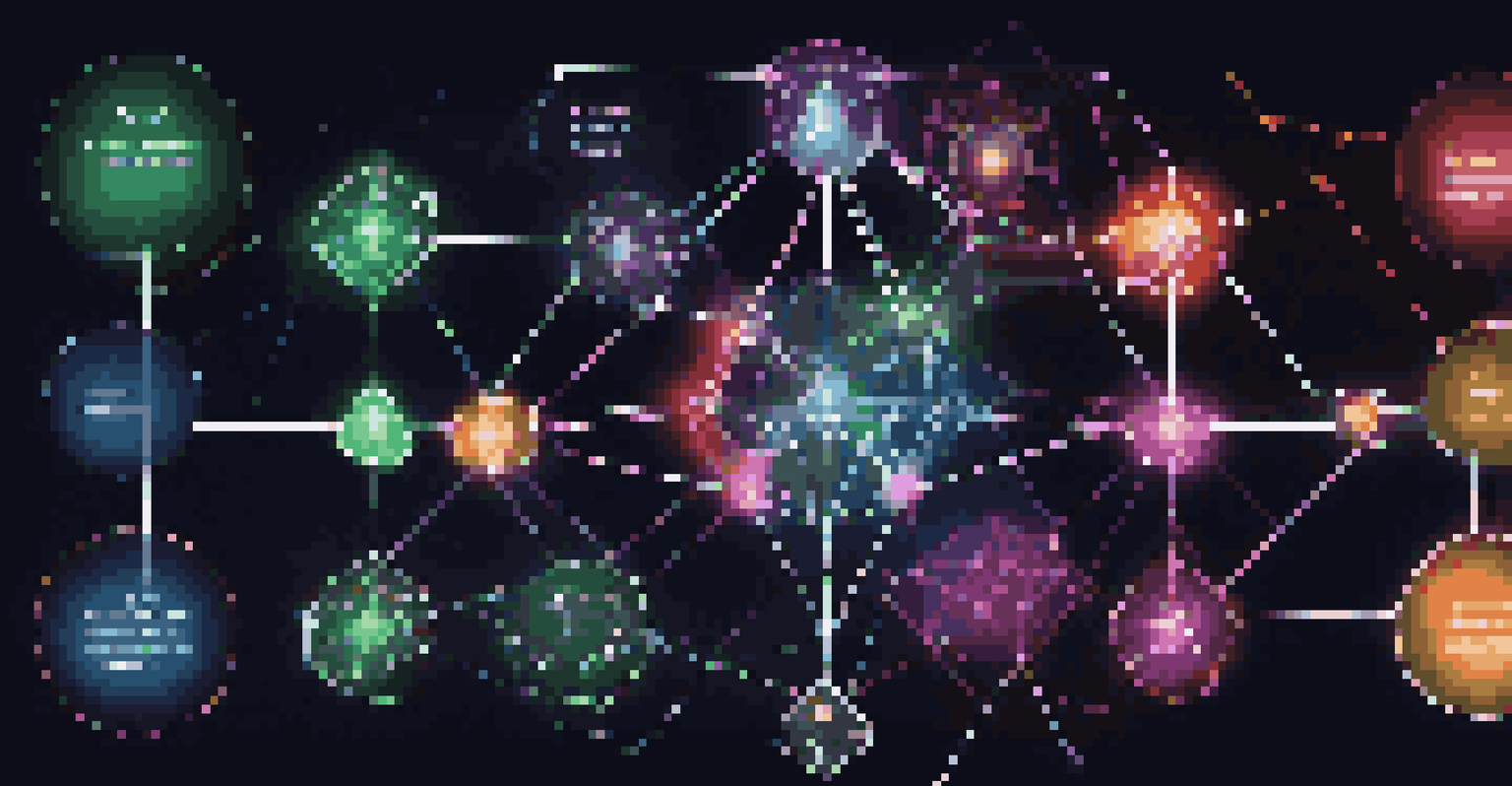Governance on the Blockchain: New Models for Decision-Making

Understanding Blockchain Governance and Its Importance
Blockchain governance refers to the frameworks and processes that guide decision-making within blockchain networks. Unlike traditional governance systems, which can be centralized and opaque, blockchain governance is often decentralized, promoting transparency and inclusivity. This shift allows participants to have a say in how the network operates, fostering a sense of community and shared ownership.
The internet is the most important invention in the history of mankind. The blockchain is the next step in that evolution.
The significance of governance on the blockchain cannot be overstated. It directly impacts how changes are implemented, how disputes are resolved, and how the network evolves over time. With the rapid growth of decentralized applications (dApps), establishing effective governance models is essential for sustaining user trust and engagement.
Moreover, as more organizations explore blockchain technology, understanding governance becomes vital. Different models can offer unique benefits and challenges, influencing everything from user participation to the security of the network. Thus, grasping these concepts can empower stakeholders to make informed decisions.
Key Features of Blockchain Governance Models
Various blockchain governance models exist, each with distinct characteristics. Some models emphasize consensus mechanisms, like Proof of Work (PoW) or Proof of Stake (PoS), which determine how decisions are made and validated. Others may focus on token-based voting, where stakeholders use tokens to express their preferences on proposals.

Another critical feature is transparency. Most blockchain systems are designed to allow all participants to view governance processes, making it easy to track decisions and their outcomes. This openness not only builds trust but also encourages active participation from community members.
Importance of Blockchain Governance
Effective governance models are crucial for maintaining user trust and facilitating community participation in blockchain networks.
Additionally, adaptability is a significant aspect of blockchain governance. As the technology and its applications evolve, so too must the governance models. The ability to adapt and incorporate feedback can enhance the resilience and effectiveness of blockchain networks.
Decentralized Autonomous Organizations (DAOs) Explained
Decentralized Autonomous Organizations, or DAOs, represent a revolutionary approach to governance on the blockchain. These organizations operate through smart contracts, enabling rules to be encoded directly into the blockchain. Decisions are made collectively by token holders, allowing for a democratic process that can adapt to changing needs.
In the blockchain world, governance is not just about rules; it's about creating a culture of collaboration and trust.
One of the most appealing aspects of DAOs is their ability to eliminate intermediaries. Without the need for traditional management structures, DAOs can operate more efficiently and transparently. This not only reduces costs but also empowers community members to take charge of their collective destiny.
However, DAOs also face challenges, such as security vulnerabilities and the potential for governance attacks. As we continue to explore this innovative model, it's essential to balance the benefits with the risks to ensure sustainable growth.
Real-World Examples of Blockchain Governance Models
Several successful blockchain projects showcase innovative governance models. For instance, Ethereum uses a mix of on-chain governance and off-chain discussions to decide on upgrades and improvements. This hybrid approach allows for diverse input while ensuring that decisions remain aligned with community interests.
Another example is the MakerDAO, which governs the DAI stablecoin through a system of token-based voting. Token holders can propose and vote on changes, such as adjusting collateral requirements, thus directly influencing the stability of DAI. This model illustrates how participatory governance can lead to better outcomes for all stakeholders.
Challenges in Governance Models
Governance models face issues like centralization, communication barriers, and regulatory uncertainties that can hinder their effectiveness.
These examples highlight that governance on the blockchain is not a one-size-fits-all solution. Different projects may require tailored approaches, emphasizing the importance of adaptable governance structures that reflect the unique needs of their communities.
Challenges Facing Blockchain Governance Models
Despite the many advantages of blockchain governance, several challenges persist. One significant issue is the potential for governance centralization, where a small number of participants wield disproportionate influence. This can undermine the fundamental principles of decentralization and lead to disenfranchisement among community members.
Another challenge is ensuring effective communication and engagement among stakeholders. With varying levels of technical understanding and interest, it can be tough to maintain a fully informed community. Implementing educational initiatives and user-friendly platforms can help bridge this gap, fostering a more engaged participant base.
Lastly, legal and regulatory uncertainties surrounding blockchain governance can create additional hurdles. As governments around the world grapple with how to classify and regulate blockchain technologies, projects must navigate these complexities carefully to avoid potential pitfalls.
The Role of Community in Blockchain Governance
Community involvement is the heartbeat of blockchain governance. Engaging participants in decision-making processes not only builds trust but also enhances the overall quality of governance. When users feel their voices are heard, they are more likely to contribute positively to the ecosystem.
One effective way to promote community engagement is through regular feedback loops. By soliciting input on proposals and decisions, projects can ensure that governance aligns with the needs and desires of their users. This approach fosters a sense of ownership and accountability among community members.
Future Trends in Governance
Emerging trends, such as AI integration and hybrid governance models, promise to enhance decision-making and adaptability in blockchain ecosystems.
Additionally, creating inclusive platforms for discussion and debate can empower diverse viewpoints. By encouraging a culture of open dialogue, blockchain projects can cultivate richer governance practices that reflect the collective wisdom of their communities.
Future Trends in Blockchain Governance Models
As blockchain technology continues to evolve, we can expect to see innovative governance models emerging. One trend is the integration of artificial intelligence (AI) to assist in decision-making processes. AI can analyze vast amounts of data to provide insights, helping communities make more informed choices.
Another promising development is the rise of hybrid governance models that combine elements of centralized and decentralized systems. This approach can offer the best of both worlds, allowing for efficient decision-making while preserving community involvement. Balancing power dynamics will be key to ensuring fairness and transparency.

Finally, as regulatory frameworks become clearer, projects may adopt more structured governance models that comply with legal requirements. This shift could lead to greater legitimacy and wider adoption, ultimately benefiting the entire blockchain ecosystem.